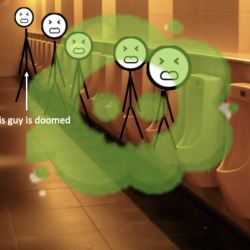When a guy is standing at a urinal in a public men’s room how do subsequent urinators choose where to stand? This vital matter is the subject of an academic paper which I will try (but fail) to explain. Who cares? We both know this is thinly-disguised juvenile (and hopefully offensive) humor. In honor of June 21st - National Urine Day!
Here at ACSH, we try our best to cover as many of the timely, important issues as possible.
So, I was mortified to see that one slipped through the cracks. Sure, junk science, vaccines, the mislabeled opioid crisis, and the anti-GMO movement are our bread and butter. Yet, somehow we missed this one:
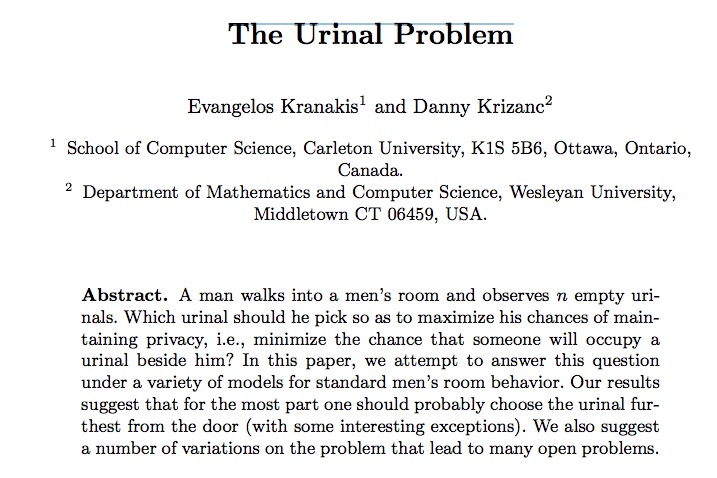
The significance of this issue speaks for itself:
- Two scientists at respected universities in two North American countries collaborated to answer the age-old question: "What is the pattern of urinal selection in the men's room?"
- This was not an inconsequential or amateurish effort from a schlock sociology department. The authors came from the computer science and math departments, respectively. This will become painfully obvious.
- Men urinate between 6-10 times per day. Let's call it eight. The combined male population of the US and Canada is 175 million.
- Assuming that half of the urinative (1) events take place outside of the home, this means that North American men use urinals 700 million times per day or 255 billion times per year. That's a lot of data and requires some serious math.
- There is plenty of serious math.
- I understand none of it. You won't either.
The authors are nothing if not clear about the gravitas of the problem:
"Algorithmic issues may arise when considering physical privacy. A particular instance of this occurs when one considers the use of a public men’s room."
Who knew?
"In order to obtain some amount of privacy while vacating one’s bladder it is desirable to have a urinal such that its neighboring positions are unoccupied."
Show me one guy on Earth who doesn't already know this.
"In this paper, we consider a variety of models for men’s room behavior and attempt to develop strategies for maintaining privacy under each."
So, it should come as no surprise that...
"As far as we know the problem we consider has not been studied before."
This is, perhaps, the only sane sentence in the entire paper.
"While perhaps related to our problem in name only, our study was at least partially inspired by Knuth’s Toilet Paper problem."
What? You people don't already know about "Knuth’s Toilet Paper problem?" Fools.
Good thing that the authors explain it clearly.
The Math Of Urinal Selection
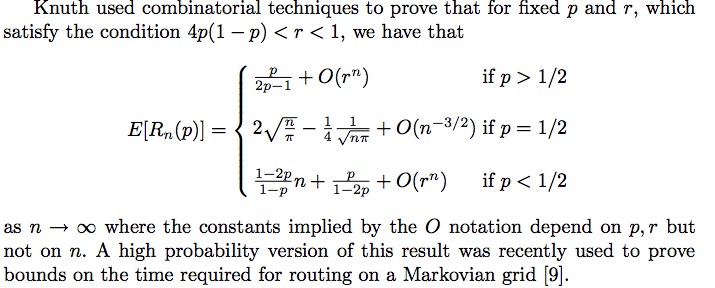
(It is reasonable to assume that Knuth, aka the Shamin of Charmin, doesn't score many babes at social events when he speaks about his profession.)
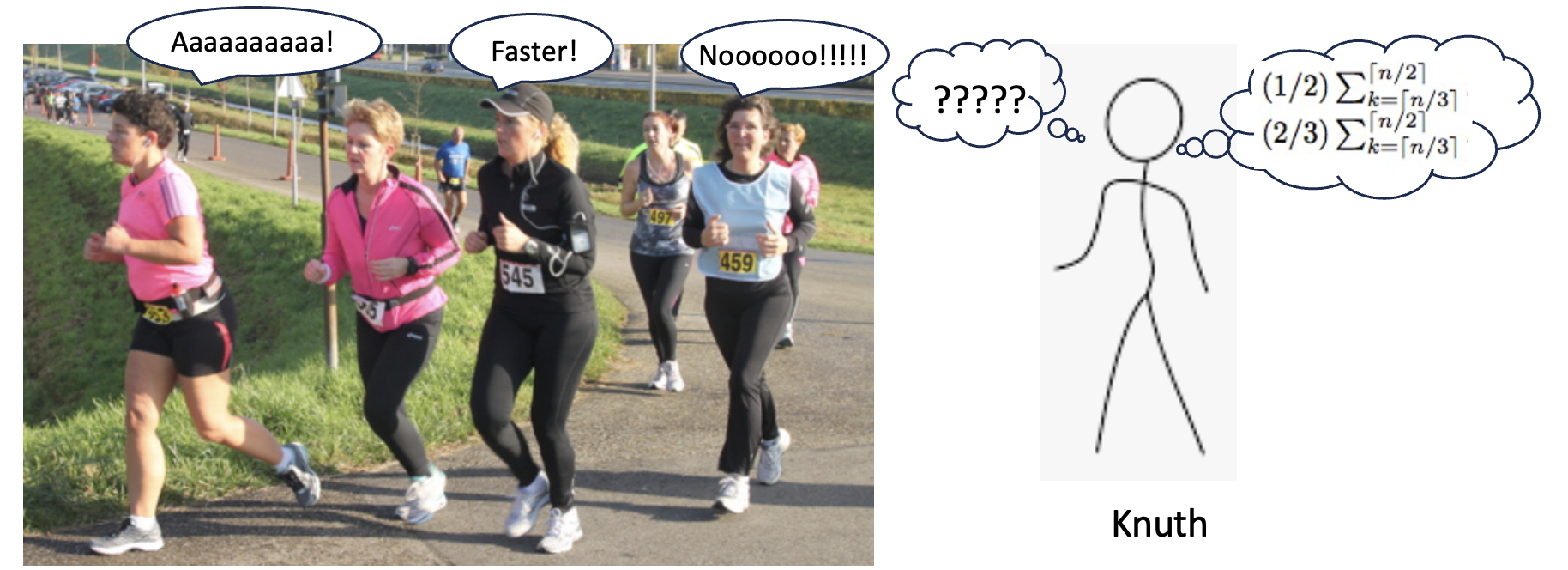
Knuth does not speak women's language. As if any guy can. Photo: Wikimedia
"Random behavior: In this model we assume that when a man enters if the configuration is not saturated he chooses uniformly at random among all positions that provide him with privacy on both sides and that once saturation is reached he chooses uniformly among all available positions."
Dr. Knuth, presumably unrelated to Dr. Ruth
Translation: Men generally don't want to look at each other's wieners when peeing and will select the furthest urinal from others.
Expressing this in mathematical terms we learn the following:

Hang on. That doesn't look right. Let's rearrange the equations and see if that helps:
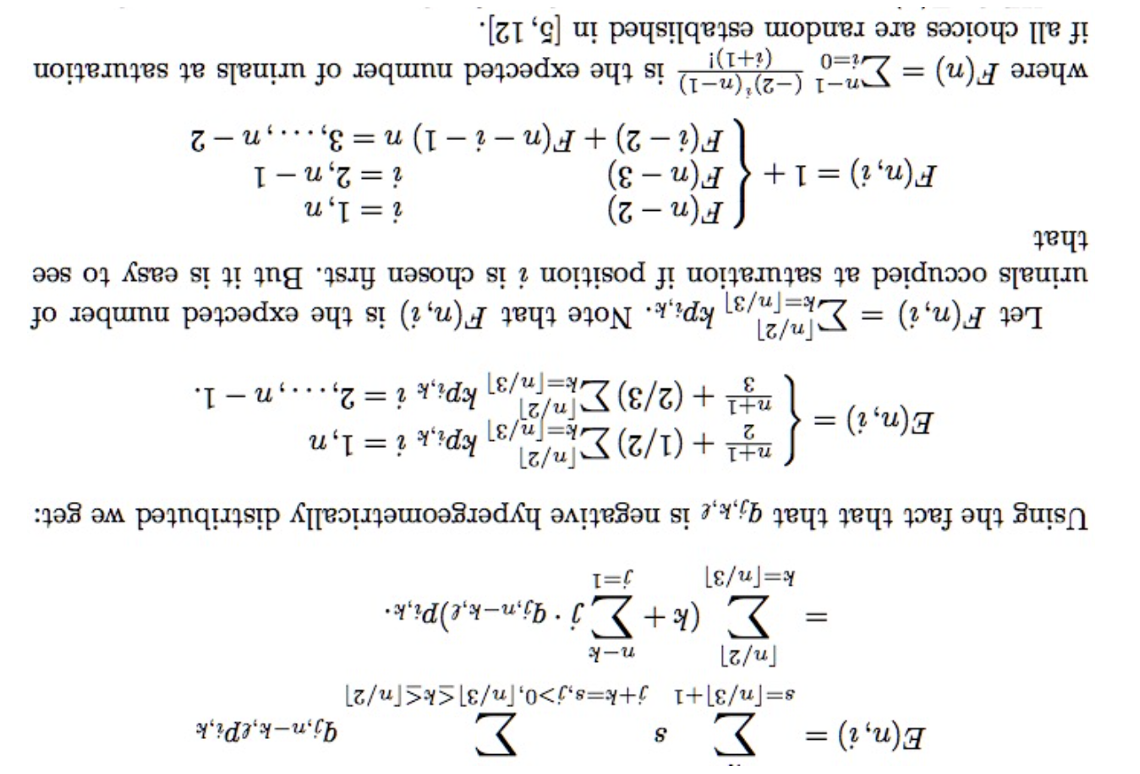
Much better.
Time out
In celebration of Pat Sajack's retirement, let's play Wheel of Fortune!! And it's relevant too because if you've gotten this far you (and probably Knuth too) may need...
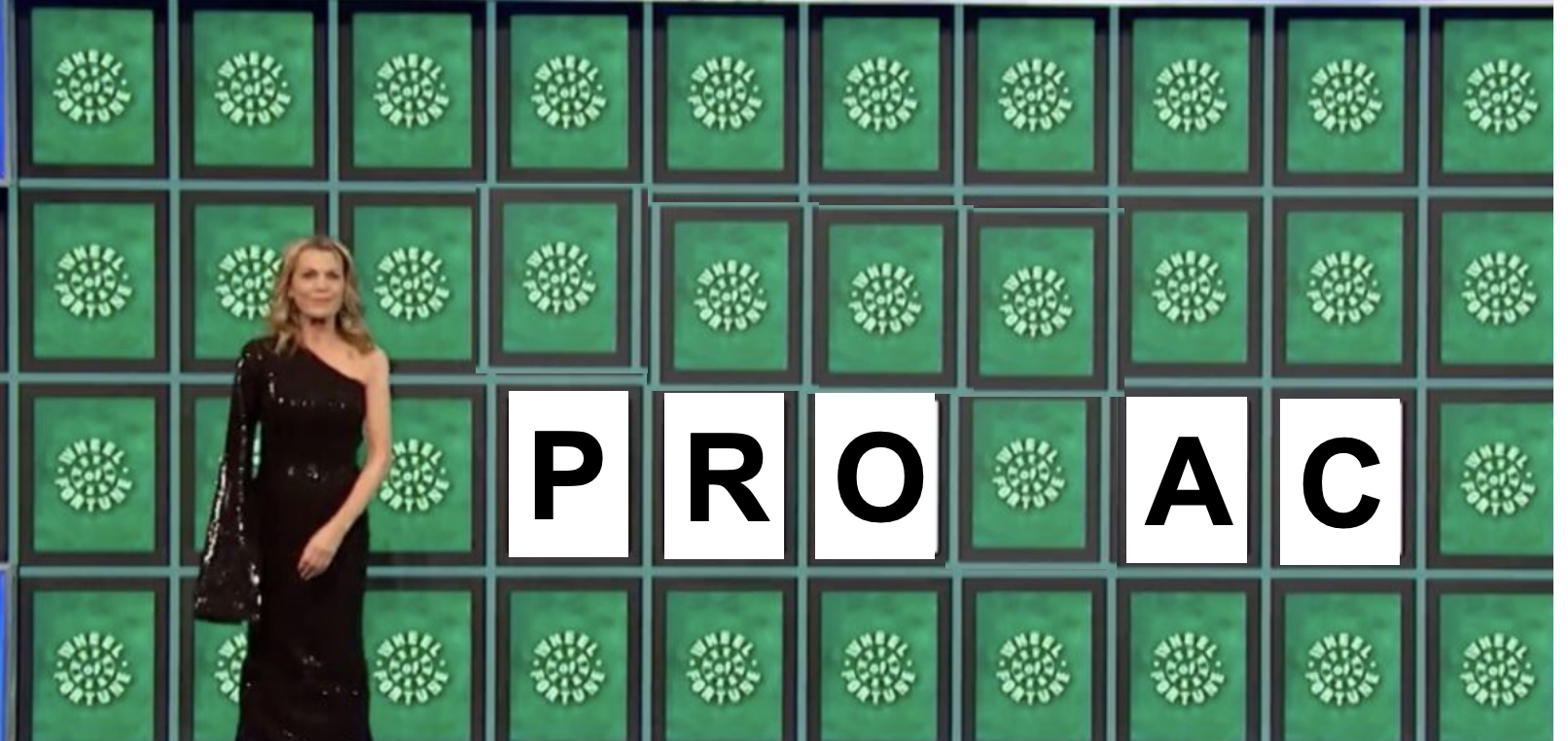
Consequences of this study
If not already obvious, the authors are suggesting that distance between urinators is of paramount importance. This can be a matter of self-preservation, especially if your technique is faulty...
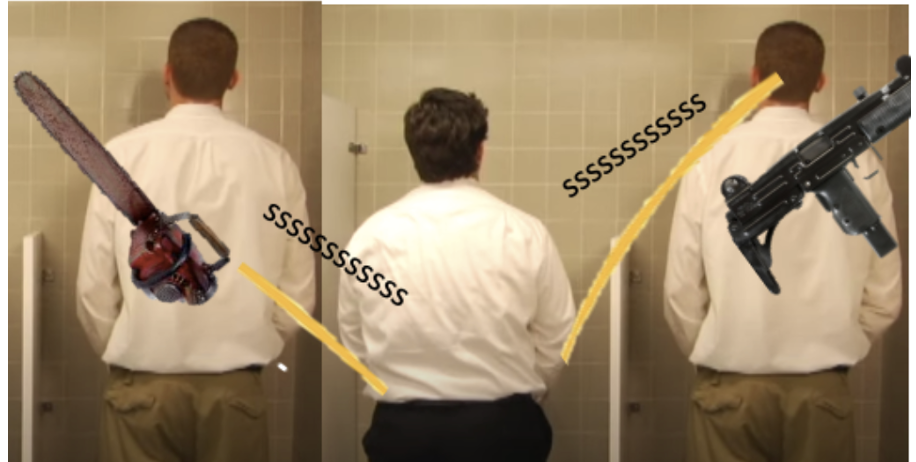
Earl (middle), much like the Yankee bullpen, has some control issues. These have made his selection of the middle urinal especially unwise.
Since today's coffee is nearing the end of its pilgrimage, let's wrap this up:
Conclusion: "Beyond this observation, we feel that this problem leads to many interesting variations that are worthy of investigating further and we encourage everyone to do more of their thinking while using public restrooms. (2)"
No real data are presented, so it is impossible to determine the statistical significance of this study. Let's just assume that Pee < 0.05.
Note:
(1) No - this is not a word. Until now.
(2) My esteemed colleague, Chuck Dinerstein, perhaps looking to waste his time too, has written on one of today's most pressing public health issues: Urinal backsplash. Be sure you don't piss miss his 2022 article on just this.
